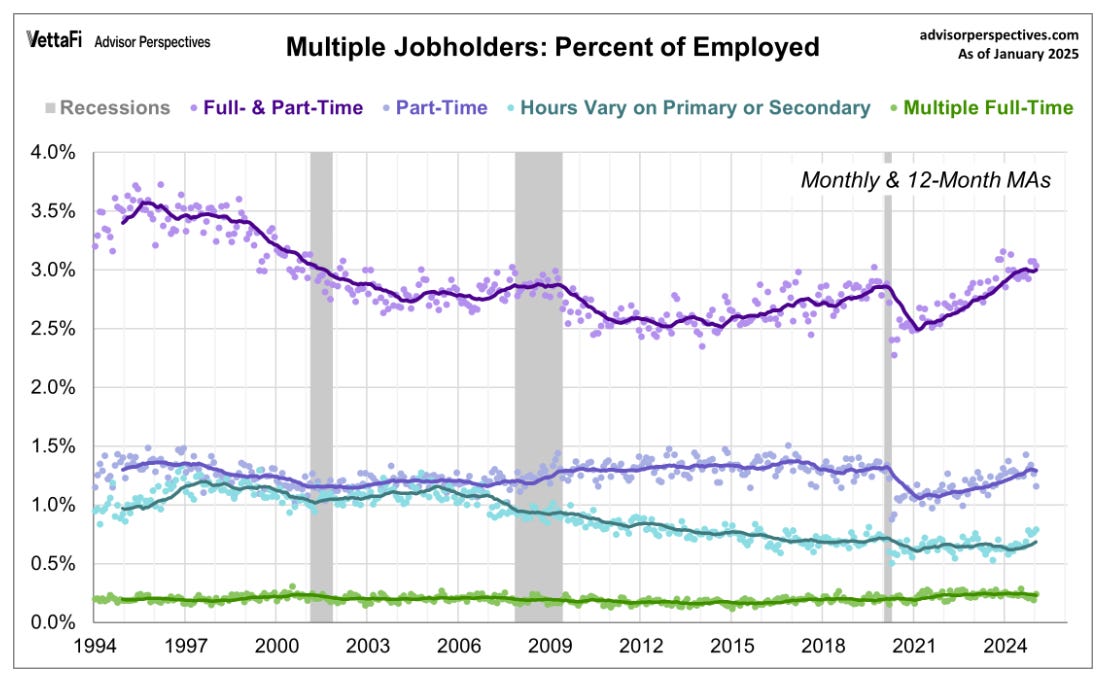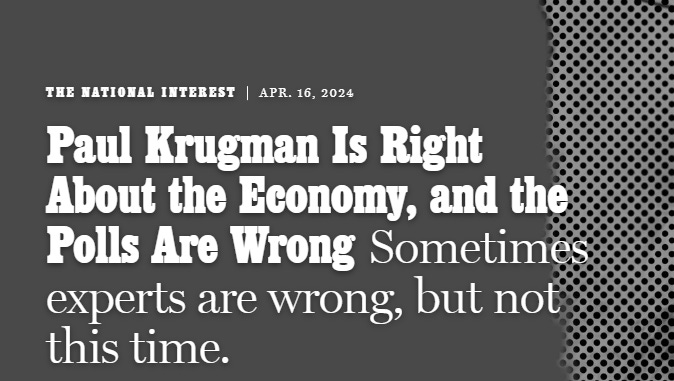As a reader of these musings you know that I have signaled great concern about the path our economy is on and what that means for housing. In 2024 I believe the decision by mainstream media was made to deny that reality as much as possible. Otherwise, we would have seen more images in MSM of the tent cities and homeless whose numbers are growing daily.
The US homeless population increased by more than 18% in a year, driven by high housing costs, natural disasters and a spike in migration to large cities, government officials said.
The Department of Housing and Urban Development (Hud) said Friday that more than 770,000 people were in shelters, temporary housing or had no shelter, according to a survey carried out one night in January 2024 (my emphasis).
The number follows a 12% increase the previous year and is the highest since the federal government began an annual count of the homeless population in 2007.
The figure is likely an undercount, as it does not include people temporarily staying with family and friends.
The survey showing this increase was taken in January 2024 - one year ago. Likely these numbers are much higher as our affordability situation has not improved despite official numbers showing inflation relief. The number cited above is prior to the large-scale disasters that hit in 2024 including Beryl, Helene, Milton and the fires in LA to name a few. Inevitably when I post something about homelessness on social media the usual daggers get thrown…people should get a job or it’s the immigrants! When 8.6M Americans already hold multiple jobs, a 6.3% increase from January 2024 and higher than during the GFC and COVID, that narrative doesn’t completely jive.
And, if we are supposedly throwing money at immigrants why are they homeless? When diving into the numbers in Denver for instance, the biggest increases have been in the Caucasian population. Of course, all of these things can be true at once - a reality partisan soundbites mask.
Last week Politico published a deep dive into some of the methodology behind official labor and inflation data to illustrate why that data might not accurately reflect the true state of things. Before we go there, unfortunately, we must take a quick detour. If you haven’t been living under a rock, by now you have heard a little something about the USAID scandal. If you lean left, it is likely you are reading stories about unfinished classrooms in Ukraine while if you lean right, you’ve likely heard about sponsorship of a transgender opera in Columbia.
Independent journalist Matt Taibbi of Twitter Files fame has spent hours diving into these payments, uncovering several payments made to high-profile media companies. The accused have issued statements denying the receipt of handouts, arguing instead that these were payments for services. The fact that these outlets are being paid by our government at all should be discussed. Politico in particular has some egg on its face having to own up to a $7.5M payment. I encourage those of you who have the time to do your own searching on USASpending.gov before accepting some of the “fact-checking” claims. For those who find concepts easier to understand through movies or fiction, Beyond Borders is a good flick about how aid can be corrupted and wrapped in nefarious activities.
You may recall this headline from last year:
It’s hard to put into words how upsetting this headline was to me. As I traveled across the country in 2024 talking to everyday Americans it became abundantly clear that it was our media who misunderstood. In the real world, people are struggling to make ends meet, availing themselves of Buy Now, Pay Later and credit cards to pay for necessities. The top of the K however has until recently soldiered on despite increasing costs. How could Paul Krugman get it so wrong? Although I never fully assimilated, I have traveled these rarefied halls. Unlike most of my fellow grad students who relied on assistance from their parents, I had to work full-time to afford NYC. My various jobs meant I got a visitors pass and front-row seat. Take for instance, my job working for a Pulitzer-Prize-winning reporter, turned executive at Dow Jones. Weather permitting, her daily commute consisted of a helicopter ride from Princeton and sedan-ride from the helipad to One World Financial Center. If the ceiling was too low and visibility poor, then car with driver would have to suffice. These folks are protected from interactions with the real world. The help is chosen carefully to ensure there are no nasty surprises or confrontations with reality. When a maid gets caught stealing sugar, she is whisked out the back door, never to be spoken of again. Never mind that she was the most consistent presence in your child’s life for a decade.
This is how someone like Krugman could get this so very wrong. Their days of pounding the pavement for a story are long behind them. Instead, editorial board meetings are scheduled and held where the story is fed to journalists by political pundits and power brokers in a cushy boardroom over chilled shrimp.
Before the presidential election, many Democrats were puzzled by the seeming disconnect between “economic reality” as reflected in various government statistics and the public’s perceptions of the economy on the ground. Many in Washington bristled at the public’s failure to register how strong the economy really was. They charged that right-wing echo chambers were conning voters into believing entirely preposterous narratives about America’s decline.
If you have been reading my Substack you are likely not puzzled by the disconnects between the official data as I’ve linked discussions, book recommendations and deep dives into these statistics, their revisions and flawed methodologies. I’ve also shared with you my journey across America as I simply could not fathom how anyone believed we had a structural housing shortage. Affordability crisis with misallocated inventory? Yes, that’s the real story that tracking Census and inventory data did not paint.
The author of the piece linked above, Eugene Ludwig, former U.S. Comptroller of the Currency during the Clinton administration, embarked on a journey “years ago” to understand this disconnect. The product of which was a book published in 2020 entitled The Vanishing American Dream: A Frank Look at the Economic Realities Facing Middle-and Lower-Income Americans. According to the Kirkus Review, the book “examines how traditional economic measures like the unemployment rate and GDP are masking a crisis for millions of lower- and middle-income families, who struggle to afford health care, housing, and education and occupy jobs that cannot help them reverse the downward slide.”
What Ludwig found in his research “shocked us. The bottom line is that, for 20 years or more, including the months prior to the election, voter perception was more reflective of reality than the incumbent statistics (his emphasis).” As I have discussed repeatedly here, I believe that since 2007 we have been living in a silent depression…one which the media ignores. The reason MSM is able to hide this reality so expertly is because these statistics - published with great fanfare - fail to accurately portray the economic realities faced by the majority of Americans. This is why you will not find images of tent cities splashed across national media.
He further writes,
I don’t believe those who went into this past election taking pride in the unemployment numbers understood that the near-record low unemployment figures — the figure was a mere 4.2 percent in November — counted homeless people doing occasional work as “employed.” But the implications are powerful. If you filter the statistic to include as unemployed people who can’t find anything but part-time work or who make a poverty wage (roughly $25,000), the percentage is actually 23.7 percent. In other words, nearly one of every four workers is functionally unemployed in America today — hardly something to celebrate.
Let that soak in for a moment - these statistics include the homeless who are working…you know the ones that everyone says should get a job? Nearly one of every four employees is functionally unemployed. Often you will hear folks in business lament a lack of hard workers. As someone who has managed hundreds, if not thousands, I felt that way sometimes as well. However, I had to also admit that I was working too hard for what was being given back. Our shareholders were compensated while workers were not. The social contract has been obliterated while the constant pushing of the YOLO-FOMO reality distortion field has driven our Forgotten Americans to debt slavery like lambs to slaughter. Is this a booming economy, an economy you wish on your children? While undertaking his research, Ludwig writes that he began noticing the decay in our cities, including a “homeless encampment fixed outside the Federal Reserve itself.” Last year I shared with you details of my trip to DC and New York. Both city centers were deserted and in a state of disrepair as are many cities across the United States I have visited. Even if you visit these cities in person these worrying signs can remain hidden as most who travel for work or pleasure don’t typically have the time or inclination to venture off the beaten path.
Hopefully you are asking yourself, why this story (in Politico) now? Surely Ludwig’s former colleagues could have done with some reminding of these facts prior to the election? He wrote his book in 2020 after all? Most of the talking heads would agree it was the insistence on the strength of the economy that led to a resounding loss for the Democrats. Is this story meant to be a call-to-action or a feeble apology? Additionally, what was all that fuss raging across social media this past weekend about “soaring” listings for sale in DC? Truth or fiction? And, initial Redfin results are out for January, so I will share my forecast below for existing home sales which will be announced by NAR next week as well as my summary of who’s hot and who’s not. Existing home inventory is growing unseasonably across the United States while Zelman’s survey shows “concerning” January results for the builders and the MBA (finally) worries about delinquency trends. The stress that has been building in housing for some time is coming to a head.
The Ides of March is near…as is the Spring selling season…what is there to fear?
Keep reading with a 7-day free trial
Subscribe to M3_Melody Substack to keep reading this post and get 7 days of free access to the full post archives.







